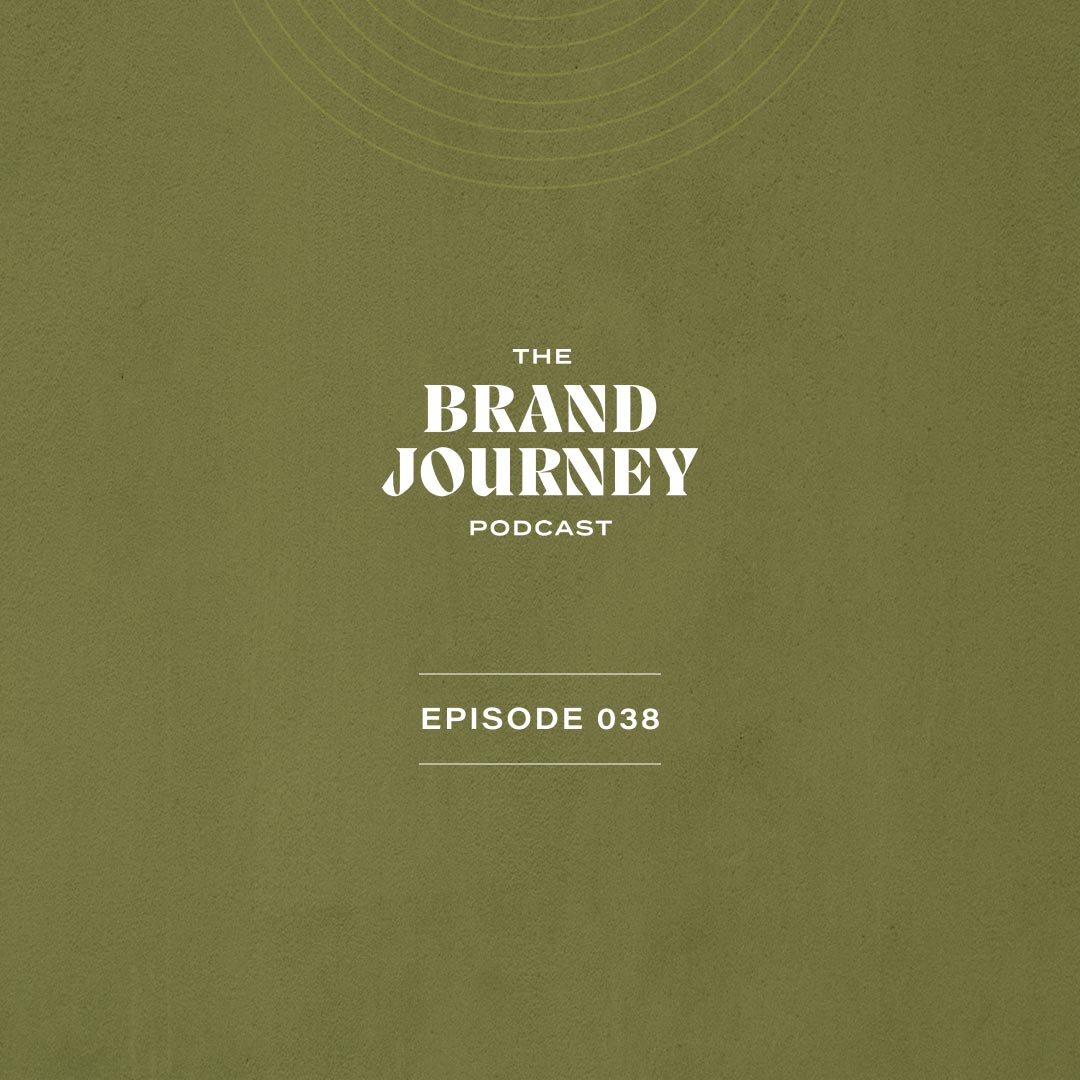In this episode, we talk about the importance of simplicity in branding in both internal and external branding. We share about the psychology behind wanting to add more to designs, and how both client requests and internal brand coherence play important roles. Some things we discuss are:
- Essential brand communication
- Avoiding decision overload
- Packaging architecture
- The need for clear, concise copy on websites
- How simplifying creates a more impactful brand messaging
You can find us on Apple Podcast, Podbean, and Spotify.
#followyourbrandjourney
TRANSCRIPT:
Jo: Well, I think the reason why we want to talk about this, well, the reason why I feel strongly about this is because it's really easy for people to want to add more to a particular piece of design. It's almost like we have this There's a psychology around, Ooh, if we don't say yes to icons, then we're missing out on something.
A conversation that I had with one of my clients recently in terms of getting a brief together for their packaging project. And they were saying, Oh, we just want to make sure that the deliverables include icons for the packaging as well. And I said, not necessarily because It depends on the strategy, right?
Like icons might not be the right thing for communicating what we want to communicate on the pack. Just because we want to add icons doesn't mean that we should be adding icons. There might be something else we could do that is going to be more effective to communicate that to your clients. So I don't include that as a must have deliverable because it might actually sway your packaging.
And you're hitting something that's not really relevant.
Donaji: that's too, that's too, too small of a design decision to be thinking about ahead of time.
Jo: Yeah. Yeah. But it's interesting because she's, she got a few other quotes from other packaging designers and they were like, yes, we'll include icons. So it's like people very, I think this is a conversation for designers as well. It's like when we brief on a project, we think that our clients need. All these things.
And so we're like, okay, we'll give you icons. We'll give you this, we'll give you Instagram templates, all of these things without properly understanding what people actually need, because maybe that's not what they want. So we end up giving them really a lot of brand assets that isn't actually effective for telling
Donaji: wonder if maybe part of the reason why is they're sort of creating these packages and they don't want, I mean I'm totally assuming here, but like maybe they don't want to be asked to do that later as an added thing in the scope without getting paid. And so they're like putting it in there just cause like, you know, maybe, but I mean, I think for me, this conversation is more about like, yes, design.
I totally understand that from this point of view of we need to simplify it like visually for many reasons, not only to understand, um, not have decision overload or overwhelm. not freeze people, not confuse people, like all of these things. But I also was thinking of it from an internal perspective, like an internal brand perspective of when you're trying to do too many things and you have too many parts of like a business that you're trying to bring together.
If you don't have a really good foundation in place that all of these different things at once might be, um, really complicated. I mean, maybe confusing. So for example, if you have somebody who's has a service based business and they have, maybe they're doing coaching and they're doing, and they have a course, maybe they're writing a book.
Um, and then also they're launching. Or they have this other business that they want to merge with this other business. A lot of times I've had people come to me and say, how do I bring this together? And sometimes it feels like it makes sense. And we do that. And then other times it feels like it needs to be separated because it's just two different things, you know, and there's, there's no reason why one needs to be part of the other.
And to me, it feels like it's just kind of depending on what goals you have. You don't have to bring everything into your business that you do. People don't need to know that you are great at 25 different things. You know, it's like maximizing that little space that you have on the internet to drive the sales to do the work that you want to do.
And then eventually I think there are opportunities to bring other things in. And I also was thinking of when people are starting their business. I think a lot of times that's when all of these questions come up, like should I offer this and then I can do this and then I should offer, and there's like a million different services, right?
And so it ends up being really difficult to structure something that's really focused and specific to a specific group of people. And It can be very overwhelming. Like how do you even explain, how do you communicate what you do and who you do it for? And what is the end result? I was thinking of that when I was thinking of this episode is how do we simplify your brand?
To be able to communicate like who you are and what you do and who you work for or like with So that there is no confusion from the client customer perspective when they come to your website or anything like that But definitely visually That's another thing it's wanting to include all of the meanings, all of the different things into your brand because, you know, you've loved all of these things personally, you know, and like you want to throw this texture and this paintbrush and this color and this, you know, these many fonts because of, we came to this minimalist branding sort of trend for a while and then like for the past few years we've had this opposite.
part of it that's like more of a maximalist approach. We kind of went from like super simple, um, to sort of like back in the nineties when we could like try all the things on the internet that you could do to do the website, but like in a more like,
Jo: yes.
Donaji: in a more like modern, cool way,
Jo: Yes.
Donaji: know, like designers have kind of gone that way.
Like we always come full circle. Which I think is fun because it like breaks that trend. Yeah, and,
Jo: It's exciting.
Donaji: more interesting, yeah, and exciting. Um, but then people do that without knowing, like, it's because you're following a trend and so they don't really understand how to make sense of that in a way that, um, doesn't confuse people, you
Jo: Right. Yeah. I feel like sometimes it can feel very tempting to add all of those different things in, assuming that it is part of your brand, but then forgetting that actually the thing that's going to connect and communicate the clearest for your ideal customer to understand what it is you're doing is the content.
is not all of those textures that you loved since you were a kid, right? It's not those things. So it's like making sure that your decisions are kind of distilled down so that it's really clear around these are the things that represent the brand that is going to impact my ideal customer in the way that they want to be impacted and how they want to feel.
So it's almost like this exercise of potentially writing down the things that you think A part of your brand and then the things that your ideal customer would resonate with, and then making sure that there is definitely an overlap and then distilling that down to make sure that you're really prioritizing the ones that are going to communicate the most effectively.
The way that I like to look at it is there used to be this exercise. I think Tim Ferriss mentioned it in one of his podcasts when he was writing a book. And he says, every time I have. Every time I'm writing an article, I always go through and say, well, what's the top 20 percent that must stay? That is the most essential piece of this article.
And designers like that, what's the most essential pieces within that design or that brand that need to remain? That, that, Crystalize what we want to say. And then what's the 20 percent that is just adding fluff for no reason, or it's just they're taking up space and that stuff can go. And once you take out that 20%, I sometimes even like keep taking out.
I'm, I remember like my design teachers in uni was like, how. Far can you go? How far can you strip it back before you lose that essence? He's, he used to teach us about like finding that sort of balance between really crystallizing your idea and taking out everything else that's just getting in the way because it's confusing people.
And it might be a border. It might be some sort of texture that's adding like more complexity than it needs to. Um, so I like to look at it like that, the 20 percent in and the 20 percent out rule. And then the other thing that I like to think about is it's almost like for packaging. It's, it's a very small amount of space when we're playing with packaging.
So we need to make sure that only the most essential stuff is on there and it needs to be visible and readable. So if we're like cramming text in and hoping that our customer can see it, it's probably not doing an effective job to sell the product. Even though we're happy, we've got everything on there.
The customer can't connect or this visibly see what the product is. And so when it comes to packaging, there's this like rule of thumb, which I think is really interesting around looking at. packaging architecture. So it's like splitting up your packaging, that layout on your packaging, into a space that holds the brand.
So it's the, the stuff that your brand needs to say to brand block on shelf, to visually tell someone that, that this is a branded product. And so this might be where your logo goes or where some background colors go,
Donaji: the name of the
Jo: And then you.
Donaji: and stuff.
Jo: Yeah. But the name of the product is actually a product related in information.
And that kind of goes in, in a section maybe
Donaji: Oh, okay. I was thinking of like the, what you need for the customer to grab attention. Yeah.
Jo: Hmm. So it's almost like looking at your layout in. In sort of what's the chunk that talks about your brand and is going to be the same more or less across all the different products that you have and what's the thing that's going to individually communicate the story of the product. Um, so then you have some sort of structure and system, whereas if you're trying to put everything over the top and it sort of melds in together, you lose that structure and you, you lose that template.
And it's almost like thinking about it in terms of. the architecture, packaging architecture, being the architecture of like a home or a house where one part of the home is for your living room and it feels a little bit cluttered when you bring in like furniture that should be in your bathroom or your kitchen into the living room, right?
It loses its functionality and it's not clear what that section needs to do. Whereas if you understand Why your packaging needs to communicate a particular thing in a particular section of the packaging. It makes it a lot easier for people to, to, to make that decision around what goes there and what does not belong.
Donaji: And I think for websites or even like social media is the same idea. One of the things that I feel Is really important for brands to simplify websites, particularly is copy and messaging.
Jo: Hmm.
Donaji: Most of the time I find that people don't have any messaging. First of all, there's no like brand messaging and there's no inspirational messaging.
Like there's no personality to the brand when it comes to the copy. There's no anything specific telling us like what this brand is all about. Um, and then the other part is that there's too much copy. Um, people feel like they have to explain everything and tell everything about what they do and who they are and nobody reads that much, you know, anymore, especially on a website.
They're just skimming. And so I think really maximizing. the space that you have and choosing intentionally like the words that go into like these little bits and pieces to help people just really quickly grasp who you are and what you do is really that opportunity for people to to To really make an impact and and have people be able to remember because if there's too much as a user you have to search and You know Go through hoops to find what you're looking for That's really when you lose people's attention.
And so when it comes to simplifying your brand is really simplifying your messaging simplifying your copy Simplifying like who you're attracting services, your design, like it's really everything. Once you do that, I feel like things can like really come into place and like, um, and it feels so much more powerful.
Is there anything else that you want to mention before we go?
Jo: No, I think that was it. I think this is great. And again, I think really inspired me to like, go through my own website and like take out bits and pieces. Cause I was like, that is such a good point around messaging. And I think I really want to talk to you more about the messaging piece, maybe in a different, of course, in a different episode, but I think this is really, One of the hardest things for people to get clear on is like the messaging, their offering or the service and their brand, whether it's on their website or whether it's on their product or their packaging.
It's confusing for people to know what to write, how to write it well, how to be clear and hooky at the same time, like grab attention, engaging, like it has to do all these things. And for me, I really struggle with that as well because I'm not a copywriter. So it'd be really fun to talk about that.
Donaji: I'm also not an expert in copywriting, but like I do, I do my best with my clients to try to pull all of these things that are part of, you know, who the brand is and what their values are and what they're trying to do, their mission to create something that's inspiring. And it feels very unique to their brand and their business.
And it introduces the brand and you like immediately get a sense of like what this is about. but I also struggle with like editing myself on my website. I probably still have too much copy You know, it's hard if you're not a copywriter and if you're not specifically a copywriter that does like marketing copy is really difficult like And so you have to do your best, but I think it's, it's really educating yourself and having somebody help you create a brand strategy to be able to pull all these things because you're not going to be able to do this on your own.
Like these are things that you need another sounding board for, because a lot of times we have all these things in our heads and we don't hear them ourselves. Until we spill them out and we talk to somebody and they're hearing it with a different, in a different way, or they're able to pick up things that we don't connect together.
And that's when I think like really cool things happen and that's happened to me when I work with other people.
Jo: Mm, mm, I like it. All about, we're all about clarity.
Donaji: All about clarity and
Jo: All about clarity and focus. Mm
Donaji: uh, hopefully that gave you some inspiration to look at your website and to look at your, your copy or your, even your brand and your mission. So it might be a good idea to take some time whenever you feel like it to do like a mini audit and just kind of review some of these things and see where you can simplify.



No Comments.